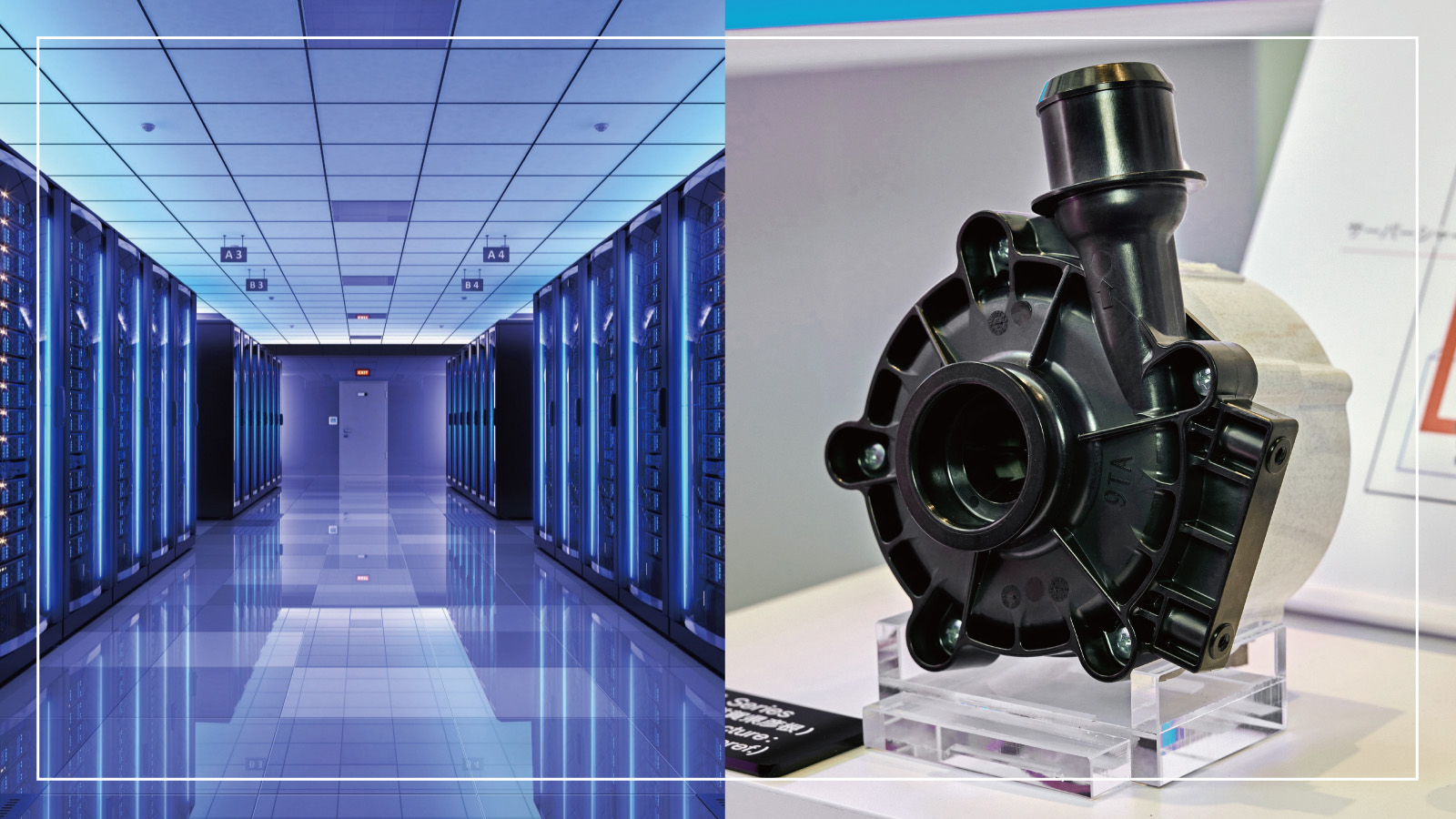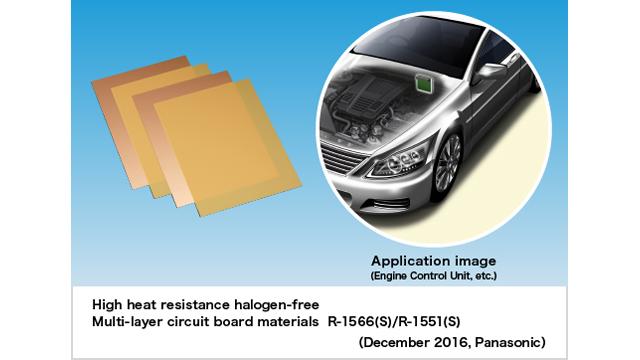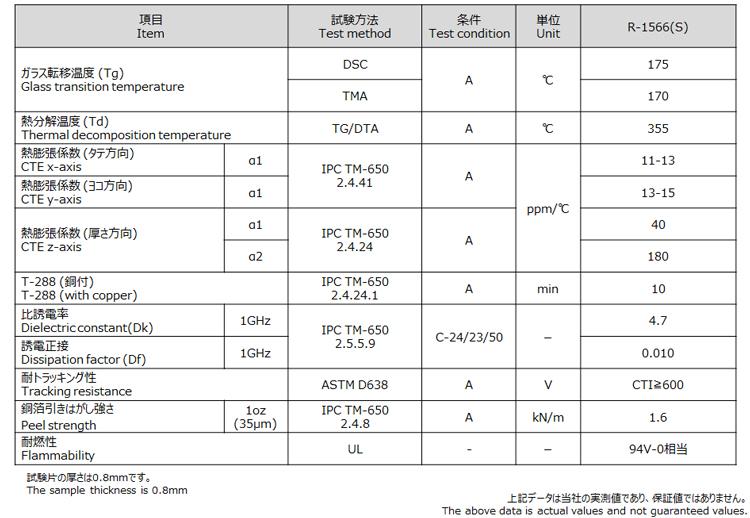
Nov 18, 2025
- Products & Solutions
- Stories
- Operating Company
Dec 22, 2016
Products & Solutions / Press Releases

Panasonic's "High Heat Resistance Halogen-free Multi-layer Circuit Board Material" will contribute to improving reliability of automotive ECU circuit boards, even when they are directly mounted on engines.
Osaka, Japan - Panasonic Corporation announced today that it has commercialized its High Heat Resistance Halogen-free Multi-layer Circuit Board Material [Product No. R-1566(S)] for automotive electronic control unit (ECU) circuit boards. The company will start mass production in April 2017. The product's high heat resistance and excellent tracking resistance[1] will improve the reliability of ECU circuit boards in high-temperature environments.
The number of ECUs mounted per vehicle has been on the rise with advances in the electrification of automobiles. ECUs are often mounted in engine compartments to preserve passenger compartment space, and therefore require resistance to high temperatures. The heat generated by high-performance ECU components themselves also needs to be addressed. Furthermore, circuit board materials need to be increasingly resistant to high temperatures to cope with the larger currents and higher voltages carried by HEV and EV ECU circuits. In the past, improving heat and tracking resistances usually resulted in lower processability of circuit boards due to materials properties. To resolve this issue, Panasonic has commercialized its High Heat Resistance Halogen-free Multi-layer Circuit Board Material, which features high heat and tracking resistances as well as excellent circuit board processability by adopting its unique resin design and compounding technologies based on the quality developed for automotive products.
Automotive ECUs, automotive modules, HEV/EV power control unit, DC/AC converter substrates
ECUs mounted in engine compartments, plus the heat generated by high-performance ECU components themselves, have created new requirements for high heat resistance. In some cases, these requirements cannot be met by conventional ECU circuit board materials that have glass transition temperatures of approximately 140 to 150°C. By adopting its unique resin design and compounding technologies, Panasonic has achieved a glass transition temperature of 175°C. This improves the reliability of ECU circuit boards in high-temperature environments and also meets new requirements for high heat resistance such as when these circuit boards are directly mounted on engines.
Increases in HEVs and EVs have raised concerns that large currents and high voltages flowing through ECU circuits may increase the risk of tracking, which lead short-circuit and cause failures. There is a growing market demand for circuit boards with high tracking resistance that eliminates short circuits even under high current and voltage conditions. The new product has achieved a CTI (Comparative Tracking Index) of 600 V or higher based on Panasonic's unique resin design and compounding technologies, giving it high insulation resistance to large currents and high voltages, and thus improving the insulation reliability of ECU circuitry.
Improved heat and tracking resistances tend to result in hardened circuit board materials, leading to lower drill processability. The new material has achieved excellent processability while also improving high heat and tracking resistances by adopting Panasonic's unique resin compounding technologies. This will contribute to reducing processing costs by extending the service life of drill bits.
<product no. > Laminate: R-1566(S), Prepreg: R-1551(S)

Panasonic Corporation is a worldwide leader in the development of diverse electronics technologies and solutions for customers in the consumer electronics, housing, automotive, enterprise solutions and device industries. Since its founding in 1918, the company has expanded globally and now operates 474 subsidiaries and 94 associated companies worldwide, recording consolidated net sales of 7.553 trillion yen for the year ended March 31, 2016. Committed to pursuing new value through innovation across divisional lines, the company uses its technologies to create a better life and a better world for its customers. To learn more about Panasonic:
http://www.panasonic.com/global.
Panasonic Corporation
Tel: +81-(0)3-3574-5664 Fax: +81-(0)3-3574-5699
The content in this website is accurate at the time of publication but may be subject to change without notice.
Please note therefore that these documents may not always contain the most up-to-date information.
Please note that German, Spanish and Chinese versions are machine translations, so the quality and accuracy may vary.